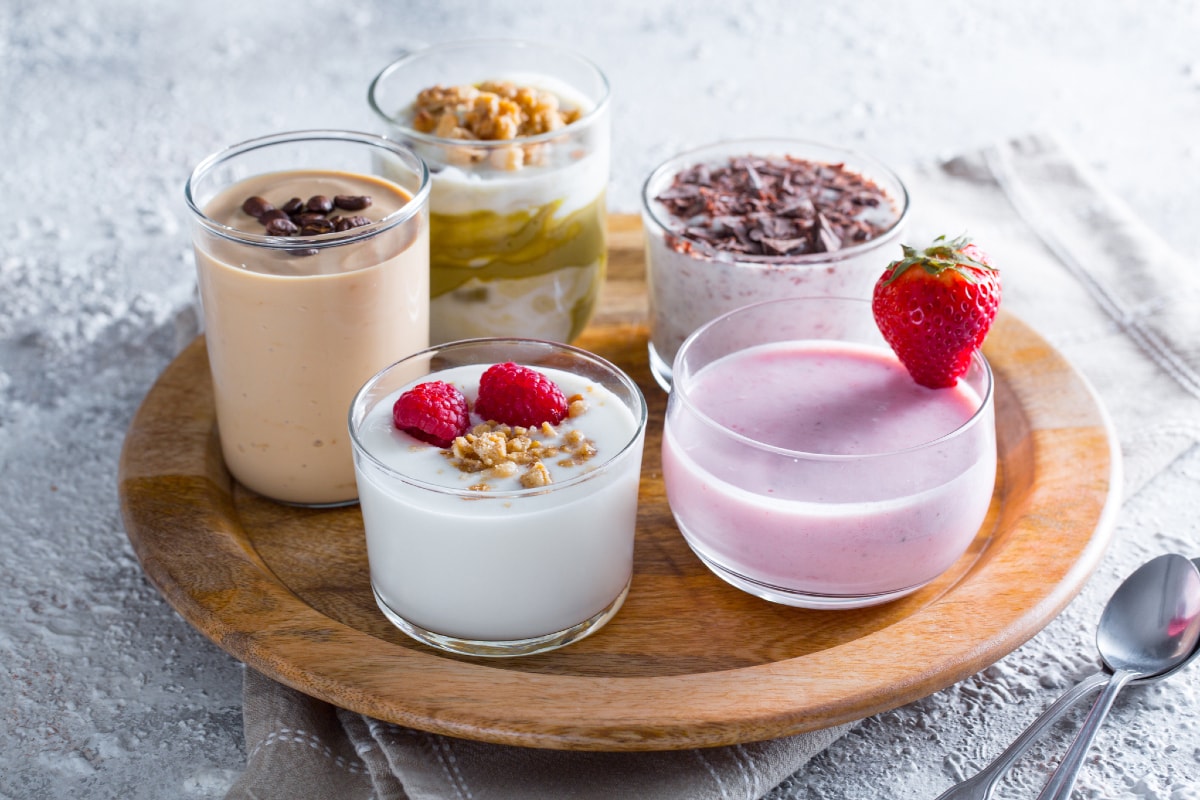Yogurt Cake
- Easy
- 1 h 10 min
- Kcal 481


It might seem almost like magic, but homemade yogurt is based on one of the most commonly used processes in cooking: fermentation. We're not here for a chemistry lesson, but much like with dough, the transformation will be evident. To make yogurt, you need only two ingredients and a bit of technique... over time, you'll be able to customize the yogurt to your tastes. For example, if you love creamy yogurt, we recommend choosing whole milk, as the higher the fat content, the thicker the final result. Temperature is also very important: fermentation depends greatly on it. To get perfectly tangy yogurt, the temperature should remain constant, but it's not easy. So, depending on the external temperature, you'll need to learn to reduce fermentation times if it's very hot, and extend them if it's very cold. Once you've achieved the perfect base, you can flavor it in many ways to get a different yogurt for breakfast or an afternoon snack! In the box at the bottom of the recipe, you'll find all the tips to enrich the yogurt with fresh fruit, coffee, or cocoa, or turn it into delicious Greek yogurt! All that's left is for you to get to work and prepare your homemade yogurt with our recipe!
You can enjoy it plain, enrich it with dried fruit and cereals, or use it to prepare many recipes in the kitchen:
Discover how to make kefir at home as well!

To prepare homemade yogurt, pour the milk into a pot 1 and heat it until it reaches 113°F 2. In the meantime, pour the Greek yogurt into a bowl, preferably not cold, and as soon as the milk is at temperature, pour some into the yogurt 3.

Mix well with a whisk to dissolve any lumps 4. Pour into the milk on the stove, then transfer everything almost immediately into a jar with a lid or a large bowl, preferably at room temperature. Cover with plastic wrap if using a bowl.

Cover again with a kitchen towel (secure the bowl with an elastic band or wrap only if using a jar) 7. Cover everything with a wool blanket: it helps to maintain a constant temperature and thus promote yogurt fermentation. Place it in an oven that is switched off or in a place sheltered from drafts, check that the temperature is between 77°F and 95°F, and ensure it never drops below 77°F. Wait 10-12 hours without moving the bowl or jar at all, then transfer the yogurt to the fridge. This step is very important as it will help thicken and cool the yogurt. Leave it in the fridge for at least 4-5 hours. Uncover the yogurt 8 and serve it 9. You can set aside 125 g of this yogurt to make more!

Clean the strawberries and cut them into cubes. You'll need 1.76 ounces to flavor 7 ounces of yogurt. Put them in a blender container 20 and blend until you get a puree 11. Pour the yogurt into a small bowl, add the strawberry puree 12

and mix with a spoon 13 until you get a uniform color 14. The strawberry yogurt is ready to serve 15.